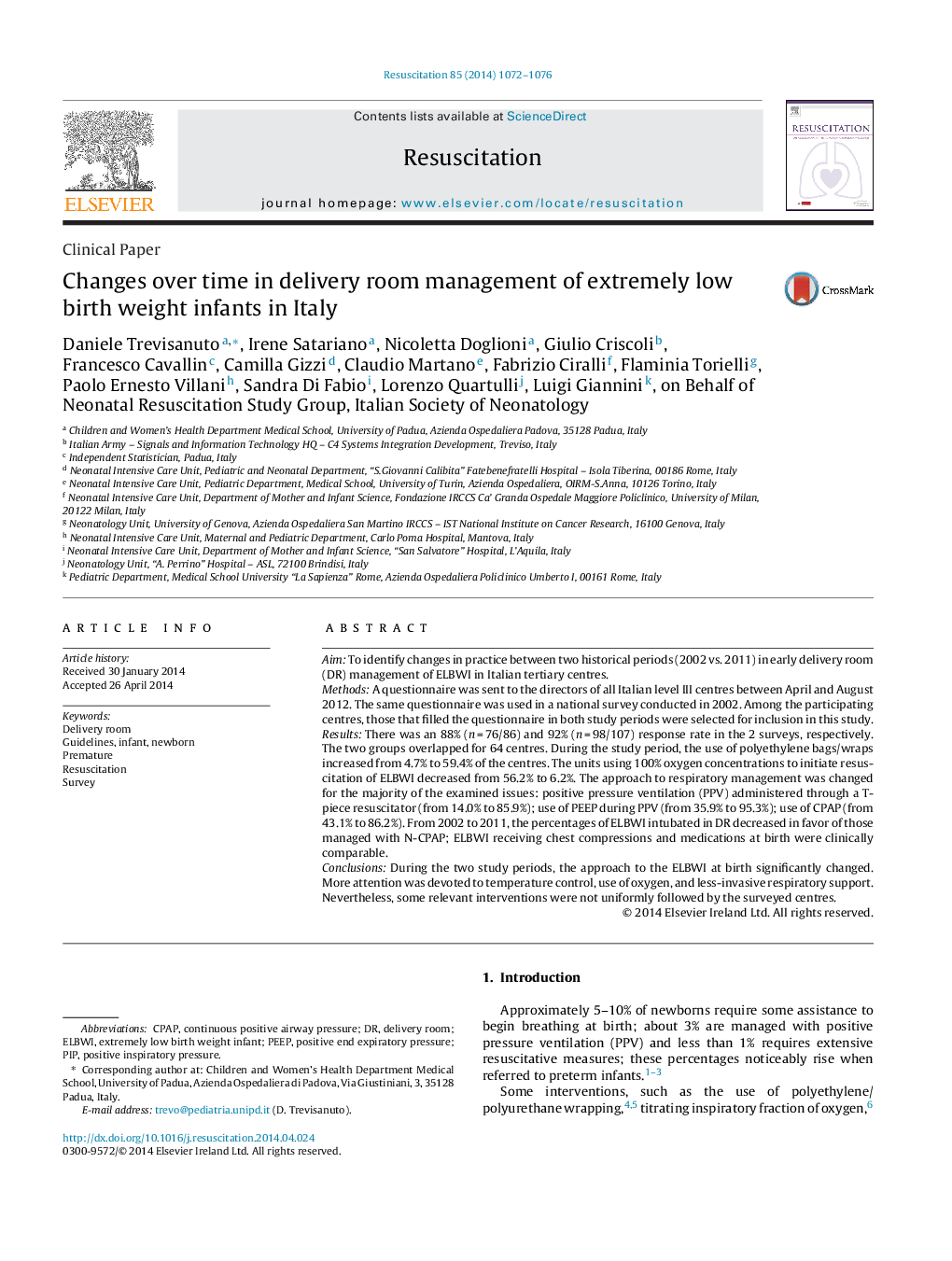| Article ID | Journal | Published Year | Pages | File Type |
|---|---|---|---|---|
| 5998111 | Resuscitation | 2014 | 5 Pages |
AimTo identify changes in practice between two historical periods (2002 vs. 2011) in early delivery room (DR) management of ELBWI in Italian tertiary centres.MethodsA questionnaire was sent to the directors of all Italian level III centres between April and August 2012. The same questionnaire was used in a national survey conducted in 2002. Among the participating centres, those that filled the questionnaire in both study periods were selected for inclusion in this study.ResultsThere was an 88% (n = 76/86) and 92% (n = 98/107) response rate in the 2 surveys, respectively. The two groups overlapped for 64 centres. During the study period, the use of polyethylene bags/wraps increased from 4.7% to 59.4% of the centres. The units using 100% oxygen concentrations to initiate resuscitation of ELBWI decreased from 56.2% to 6.2%. The approach to respiratory management was changed for the majority of the examined issues: positive pressure ventilation (PPV) administered through a T-piece resuscitator (from 14.0% to 85.9%); use of PEEP during PPV (from 35.9% to 95.3%); use of CPAP (from 43.1% to 86.2%). From 2002 to 2011, the percentages of ELBWI intubated in DR decreased in favor of those managed with N-CPAP; ELBWI receiving chest compressions and medications at birth were clinically comparable.ConclusionsDuring the two study periods, the approach to the ELBWI at birth significantly changed. More attention was devoted to temperature control, use of oxygen, and less-invasive respiratory support. Nevertheless, some relevant interventions were not uniformly followed by the surveyed centres.
